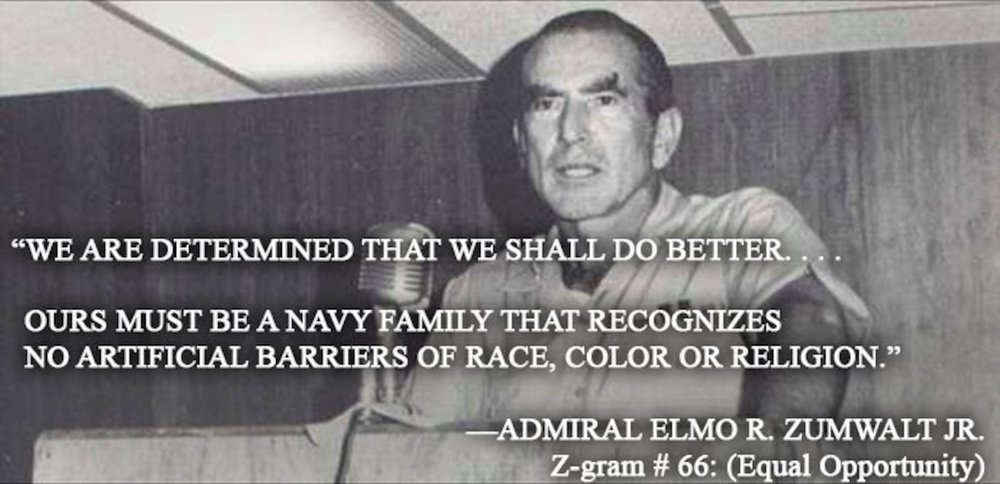Washington, D.C. –
As Black History Month 2022 draws to a close, the Navy JAG community – which includes more than 2,500 officers, enlisted personnel, and civilians in locations around the globe – continues celebrating the many contributions of the organization’s Black members, both past and present.
As Black History Month 2022 draws to a close, the Navy JAG community – which includes more than 2,500 officers, enlisted personnel, and civilians in locations around the globe – continues celebrating the many contributions of the organization’s Black members, both past and present.
Since the birth of the United States and the Revolutionary War, Black Americans have made countless meaningful contributions to the U.S. military and the defense of the nation. Black History Month is an opportunity to commemorate Navy milestones – as well as landmarks within the JAG community – that have promoted equality and equity, and brought about social progress.
Since the birth of the United States and the Revolutionary War, Black Americans have made countless meaningful contributions to the U.S. military and the defense of the nation. Black History Month is an opportunity to commemorate Navy milestones – as well as landmarks within the JAG community – that have promoted equality and equity, and brought about social progress.
U.S. Black History, the Navy, and the JAG Community
- >> Black Americans were first permitted to serve as naval officers in 1944. Thirteen Black officers commissioned in March of that year, blazing a trail for all Black Americans in the Navy. Called the "Golden Thirteen,” they obtained their commissions through the V-12 Navy College Training Program.
- >> The first Black active-duty lawyer, Franklin D. Cleckley, commissioned in 1965 as a Law Specialist. Two years later, in 1967, the Navy JAG Corps was founded. After leaving the JAG community, Cleckley became the first Black faculty member at West Virginia University College of Law, and, later, he became the first Black justice of the West Virginia Supreme Court of Appeals.
- >> In 1971, Samuel Gravely advanced to the rank of rear admiral, becoming the first Black flag officer in the Navy. Many of Gravely’s career achievements represented ‘firsts’ for Black Americans in the Navy; he also was the first Black naval officer to command a ship, and the first Black naval officer to lead a ship in wartime.
- >> In 1974, Richard Stewart became the first Black officer to be selected for the Navy's Law Education Program. Stewart also became the first Black Navy judge advocate to attain the rank of captain. Additionally, he served as a commanding officer prior to his retirement from the Navy.
- >> In June 2015, James W. Crawford III became the first Black Judge Advocate General of the Navy. During his 35-year career, Crawford completed a wide range of exciting, high-profile assignments, from a tour as special counsel to the Chief of Naval Operations, to serving as legal counsel to the Chairman, Joint Chiefs of Staff.
- >> In October 2021, Rear Adm. David G. Wilson became the first Black flag officer to serve as Commander, Navy Legal Service Command. In his current role, he leads personnel at 13 commands, who provide prosecution and defense services, legal services to individuals, specialized legal training, and legal support to Navy units around the world.
Legal Milestones in U.S. History
- >> In 1941, Executive Order 8802, signed by President Franklin D. Roosevelt, prohibited racial discrimination in the national defense industry. It marked an important step towards eliminating discriminatory practices across the entire federal government.
- >> In its 1954 decision, Brown v. Board of Education, the U.S. Supreme Court ruled that racial segregation of children in public schools is unconstitutional. This marked a turning point in race relations in the U.S., opening educational opportunities to Black Americans.
- >> In July 1964, the Civil Rights Act was signed into law by President Lyndon B. Johnson. It outlawed segregation in businesses such as theaters, restaurants, and hotels, and it banned discriminatory practices in employment. One year later, the Voting Rights Act was passed.
- >> In a 1967 decision, Loving v. Virginia, the U.S. Supreme Court ruled that laws prohibiting interracial marriage are unconstitutional, dealing another legal blow to segregation practices in the U.S.
- >> Also in 1967, Thurgood Marshall became the first Black U.S. Supreme Court justice. In 1991, Clarence Thomas became the second Black Supreme Court justice. This month, Kentaji Brown Jackson became the first Black woman to be nominated to serve as a Supreme Court justice.
With support from the organization’s Standing Advisory Committee on Inclusion and Diversity, as well as other related programs, the JAG also community will continue celebrating the history of Black personnel in the Navy and the JAG community every month, not only in February. With support from the organization’s Standing Advisory Committee on Inclusion and Diversity, as well as other related programs, the JAG also community will continue celebrating the history of Black personnel in the Navy and the JAG community every month, not only in February.
